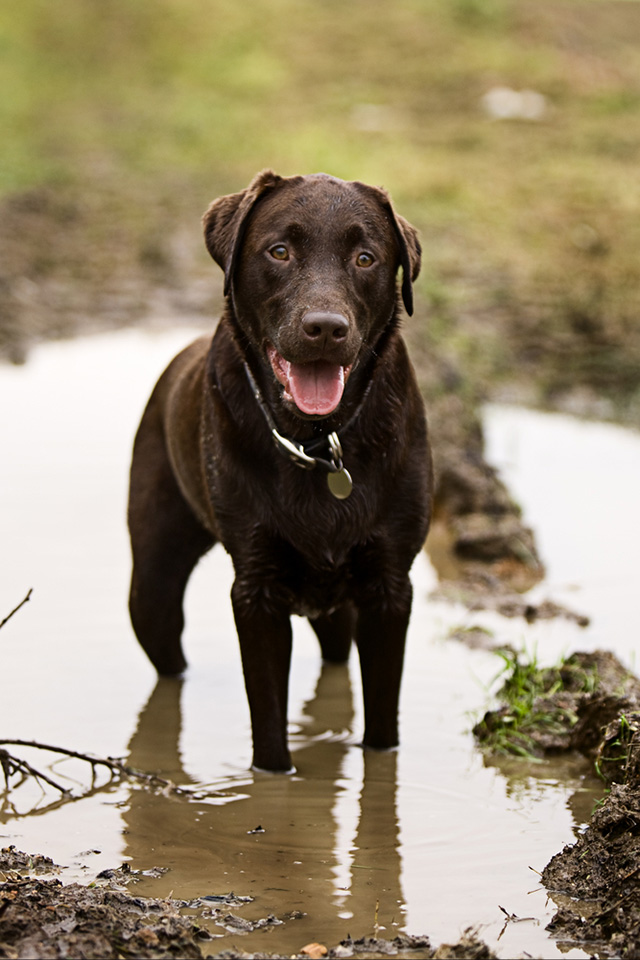Leptospirosis is caused by bacteria that are spread via the urine of infected animals. It is a serious zoonotic disease, which means it can be spread to humans by contact with infected urine.
There are two forms of the disease that are commonly seen:
Wails disease (Leptospira icterohaemorrhagiae)
The rat is the main carrier of the disease. Transmission to dogs is either directly via contact with infected urine, or indirectly via contact with contaminated water eg: drinking or swimming in canals or rivers inhabited by infected rats.
The symptoms can vary from mild non-specific signs such as lethargy and depression, to more severe signs such as abdominal pain, jaundice, liver damage and even death. Dogs that have been infected may go on to become carriers so shedding the bacteria in their urine.

Leptospira canicola
The dog is the main carrier of disease. This form of disease primarily affects the kidneys and clinical signs can vary from mild and non-specific, to kidney failure or sudden death. Again, dogs that recover from the disease can become carriers and shed the bacteria in their urine.
Additional serovars
In recent years serovars other than the two above (Renata can we explain what a serovar is) have been shown to trigger Leptospirosis and in some countries serovars other than the two listed above appear to predominate.
Expert opinion now advises that leptospirosis vaccines now cover a wider variety of serovars to ensure protection is current and appropriate to the local disease risks.
The Bratislava serovar appears to be a significant cause of the disease in the UK and in addition UK reports have also been received of dogs that have travelled to or from parts of continental Europe where Grippotyphosa is particularly common and succumbing to this form of the infection too.
A new vaccine is now available that covers representative strains from all four important groups being diagnosed in the UK and Europe. Should you be concerned please discuss the risk of leptospirosis in your pet with the practice.
Which dogs are at risk of Leptospirosis?
All dogs that are exercised out of doors or have access to rodents or where they have urinated, as well as humans, are at risk. Given how this disease spreads most dogs are potentially at risk and therefore most dogs in the UK should receive an annual vaccination against leptospirosis. As such, it is important to protect animals from this bacteria through annual vaccination which not only provides disease protection but can also impact shedding of infection in urine, minimising the chance of spread of disease.
How is Leptospirosis spread?
After ingestion of the bacteria, the leptospires enter the blood stream via the mucous membranes. This is followed by a rapid replication in several tissues such as the kidney, liver and spleen. The bacteria is then excreted via the animal’s urine back into the environment.
How does the vet test for Leptospirosis?
Your vet will suspect that your dog might have leptospirosis from the symptoms that you describe, your dog’s vaccination history and the findings on physical examination. A blood test may show a severe decrease in the white blood cell number and/or damage to the liver and kidneys.
Further analysis of the blood may also indicate exposure to Leptospirosis.
Management of Leptospirosis
Although leptospirosis can cause death in dogs, it is a treatable disease. However, treatment does not guarantee survival; individuals may require aggressive therapy such as a blood transfusion. Appropriate antibiotic therapy is also imperative.
Vaccination to prevent Leptospirosis
Prevention through vaccination is far better than cure. An improved leptospirosis vaccine is now available that offers a superior level of benefit and protection to dogs and humans alike. This vaccine is the only one of the market that has a licensed claim to inhibit renal shedding, which stops the spread of bacteria via the urine or infected animals.
It is important to re-vaccinate your dog on a yearly basis to continue the optimum level of protection – studies have shown that protection starts to wane after 12 months.

